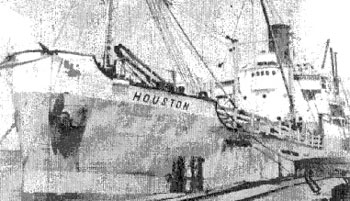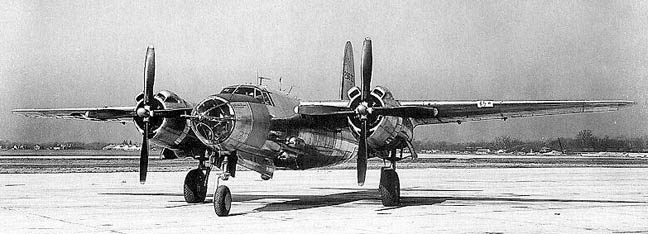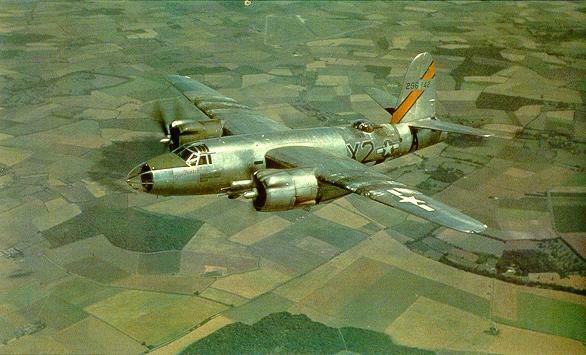|
Posted on 04/17/2003 5:35:09 AM PDT by SAMWolf
|
|
 are acknowledged, affirmed and commemorated.
|

| Our Mission: The FReeper Foxhole is dedicated to Veterans of our Nation's military forces and to others who are affected in their relationships with Veterans. We hope to provide an ongoing source of information about issues and problems that are specific to Veterans and resources that are available to Veterans and their families. In the FReeper Foxhole, Veterans or their family members should feel free to address their specific circumstances or whatever issues concern them in an atmosphere of peace, understanding, brotherhood and support.
|
|
|
|
From the end of WWII and up until the mid eighties, most Americans could agree on one thing; communism was the enemy. Communists wanted to destroy us. To change our way of life. To subvert the values of the “free-est” country in the world. Even after Senator Joseph McCarthy went out of fashion, the concept that we were engaged in mortal combat against communism lived on. To most Americans the idea seemed perfectly normal and very urgent. It was also understood that they didn’t play by the rules. They lied, cheated, bribed, manipulated, murdered and did whatever else they had to do to win, which meant that if we wanted to win, we’d have to beat them at their game.  Senator John F. Kennedy, the young, liberal catholic making a bid for the big chair in the oval office knew that the only way to get that chair was to ride the popular wave of anti-communism. In the process, Kennedy became obsessed with Cuban leader Fidel Castro. One reason for this obsession may be the widely believed concept that all communisms emerged from the same source and had a unified goal: to subvert imperialism and take over the world. The source, of course, was the Soviet Union. Today we laugh at the idea of a U.S. president entertaining such uninformed and unenlightened ideas, and we shiver at the fact that he would base U.S. foreign policy on them. But Kennedy went on to become both an avid anticommunist and a U.S. president.  In this global climate of ignorance, fear, dis-information and presidential machismo, the Cuban revolution emerged in 1959. Within a year, President Eisenhower was sad to learn that Cuba’s revolution was, indeed, a social revolution and not just the exchange of one crooked regime for another, and relations with the U.S. began to deteriorate. In July of 1960, Soviet Prime Minister Nikita Khrushchev spoke of “figurative” rockets that would protect Cuba from the U.S., and President Eisenhower announced that the United States would not “tolerate the establishment of a regime dominated by international communism in the western hemisphere.” Beginning in January of 1960, CIA planes from Florida, some with American pilots, raided Cuban fields with napalm-type bombs to burn sugar cane fields, and, as stated by Herbert L. Matthews in his book, Revolution In Cuba, the CIA “did everything that it could to bring about the overthrow of the Castro government.”  As relations between the U.S. and Cuba continued to deteriorate, U.S. Ambassador to Cuba, Philip Bonsal, was permanently recalled to Washington on October 28. On January 3, 1961, seventeen days before Kennedy took office, the Eisenhower administration broke off diplomatic relations with Cuba. Various assassination attempts by the CIA against Castro had failed, and the American people were confused about Cuba’s political climate. The right-wing press continued to assert that Cuba was a threat to the U.S., and “something” had to be done. In his first State of the Union address on January 30, 1961, President Kennedy declared that Communist domination in this hemisphere “can never be negotiated.” But even before the revolution celebrated its first year, Castro and the Cuban revolutionaries knew that the U.S. would attack.  The expected attack would likely resemble the CIA invasion of Guatemala (May 17, 1954). About a thousand men gathered inside the Honduran border, where the U.S. military supplied them with planes, weapons and money. The end result was a new U.S.-friendly government, with little change for the mass peasant poverty or tiny wealthy minority of that country. Vice President Richard Nixon was committed to the idea of opposing Castro as early as April 1959, when Castro visited the U.S. as a guest of the American Society of Newspaper Editors. “If he’s not a communist,” said Nixon, “he certainly acts like one.” On March 17, 1960, President Eisenhower approved a CIA plan titled “A Program of Covert Action Against the Castro Regime.” This took place nine months before the official break of diplomatic relations.  The plan included: 1) the creation of a responsible and unified Cuban opposition to the Castro regime located outside of Cuba, 2) the development of a means for mass communication to the Cuban people as part of a powerful propaganda offensive, 3) the creation and development of a covert intelligence and action organization within Cuba which would respond to the orders and directions of the exile opposition, and 4) the development of a paramilitary force outside of Cuba for future guerrilla action. These goals were to be achieved “in such a manner as to avoid the appearance of U.S. intervention.” The project came to life when Eisenhower approved an initial budget of $4,400,000; political action, $950,000; propaganda, $1,700,000; paramilitary, $1,500,000; intelligence collection, $250,000. The invasion, a year later, would cost over $46 million. On January 3, 1961, a meeting took place at the White House, described by Richard Bissell, CIA Director of Plans, in his book MEMOIRS OF A COLD WARRIOR: FROM YALTA TO BAY OF PIGS: “The president (Eisenhower) seemed to be eager to take forceful action against Castro, and breaking off diplomatic relations appeared to be his best card. He noted that he was prepared to ‘move against Castro’ before Kennedy’s inauguration on the twentieth if a ‘really good excuse’ was provided by Castro. ‘Failing that,’ he said, ‘perhaps we could think of manufacturing something that would be generally acceptable.’ …This is but another example of his willingness to use covert action—specifically to fabricate events—to achieve his objectives in foreign policy.”  By the time Kennedy took office in January of 1961, he had made serious commitments to the Cuban exiles, promising to oppose communism at every opportunity, and supporting the overthrow of Castro. During the campaign, Kennedy had repeatedly accused Eisenhower of not doing enough about Castro. Eisenhower, Kennedy and other high ranking U.S. officials continually denied any plans to attack Cuba, but as early as October 31, 1960, Cuban Foreign Minister Raúl Roa, in a session at the U.N. General Assembly, was able to provide details on the recruitment and training of the Cuban exiles, whom he referred to as mercenaries and counterrevolutionaries. [The CIA recruits were paid $400 a month to train, with an additional allotment of $175 for their wives and more for their children.] The original plan called for a daytime landing at Trinidad, a city on the southern coast of Cuba near the Escambray Mountains, but Kennedy thought the plan exposed the role of the United States too openly, and favored a nighttime landing at Bay of Pigs, which offered a suitable air-strip on the beach from which bombing raids could be operated. Once the bay was secured, the provisional Cuban government-in-arms set up by the CIA would be landed and immediately recognized by the U.S. The new government would request military support and a new “intervention” would take place.  Bissell states, “It is hard to believe in retrospect that the president and his advisers felt the plans for a large-scale, complicated military operation that had been ongoing for more than a year could be reworked in four days and still offer a high likelihood of success. It is equally amazing that we in the agency agreed so readily.” A nighttime amphibious landing (which, according to Bissell had only been accomplished successfully once in WWII) diminished the possibility of a mass uprising joining the invading forces, and the new location made practically impossible to retreat into the Escambray Mountains. The plan, however, seemed to breed what Néstor T. Carbonell describes in his book, AND THE RUSSIANS STAYED: THE SOVIETIZATION OF CUBA, as infectious optimism. “Castro’s fledgling air force was to be destroyed prior to the invasion,” he writes. “Enemy troops, trucks, and tanks would not be able to reach the brigade; they would be blasted from the air. To allay any fears of a Castro counteroffensive, the CIA briefer asserted that ‘an umbrella’ above would at all times guard the entire operation against any Castro fighter planes that might remain operational.” Once Kennedy became aware of the plan, opposition to the invasion was subtly discouraged. Various memos and notes kept from meetings prior to the invasion warned of potential problems and legal ramifications. At a meeting on January 28 the Chairman of the Joint Chiefs of Staff spoke strongly against invasion on the grounds that Castro’s forces were already too strong. At the same meeting, the Secretary of Defense estimated that all the covert measures planned against Castro, including propaganda, sabotage, political action and the planned invasion, would not produce “the agreed national goal of overthrowing Castro.”  On March 29 Senator Fulbright gave Kennedy a memo which stated, “To give this activity even covert support is of a piece with the hypocrisy and cynicism for which the United States is constantly denouncing the Soviet Union in the United Nations and elsewhere. This point will not be lost on the rest of the world—nor on our own consciences.” A three-page memo from Under Secretary of State Chester A. Bowles to Secretary of State Dean Rusk on March 31 argued strongly against the invasion, citing moral and legal grounds. At a meeting on April 4 in a small conference room at the State Department, Senator Fulbright verbally opposed the plan, as described by Arthur Schlesinger in his book A Thousand Days: “Fulbright, speaking in an emphatic and incredulous way, denounced the whole idea. The operation, he said, was wildly out of proportion to the threat. It would compromise our moral position in the world and make it impossible for us to protest treaty violations by the Communists. He gave a brave, old-fashioned American speech, honorable, sensible and strong; and he left everyone in the room, except me and perhaps the President, wholly unmoved." Five days before D-Day, on April 12, Kennedy was asked at a press conference how far the U.S. would go to help an uprising against Castro. He answered: “First, I want to say that there will not be, under any conditions, an intervention in Cuba by the United States Armed Forces. This government will do everything it possibly can, I think it can meet its responsibilities, to make sure that there are no Americans involved in any actions inside Cuba… The basic issue in Cuba is not one between the United States and Cuba. It is between the Cubans themselves.”  “One further factor no doubt influenced him," writes Schlesinger, “the enormous confidence in his own luck. Everything had broken right for him since 1956. He had won the nomination and the election against all the odds in the book. Everyone around him thought he had the Midas touch and could not lose. Despite himself, even this dispassionate and skeptical man may have been affected by the soaring euphoria of the new day.”
|
I'm afraid that here the author is dead wrong. It exactly WAS the exchange of one corrupt regime for another.
AIR POWER
Martin B-26 Marauder
Type: Medium Bomber
Origin: Martin
Models: Model 179, B-26A to G, Marauder I to III
Crew: Five To Seven
First Flight: November 25, 1940
Service Delivery: February 25, 1941
Final Delivery: March 1945
Production: 5,157+
Powerplant:
B-26
Model: Pratt & Whitney R-2800-5 Double Wasp
Type: 18-cylinder two row radial
Number: Two Horsepower: 1,850
B-26A
Model: Pratt & Whitney R-2800-39 Double Wasp
Type: 18-cylinder two row radial
Number: Two Horsepower: 2,000
B-26B through G:
Model: Pratt & Whitney R-2800-43 Double Wasp
Type: 18-cylinder two row radial
Number: Two Horsepower: 2,000
Dimensions:
Wing Span: B-26A & first 641 B-26B: 65 ft. (19.8m)
Remainder: 71 ft. (21.64m)
Length:
B-26: 56 ft.
B-26A & B: 58 ft. 6 in.
B-26F & G: 56 ft. 6 in.
Height:
Up to B-26E: 19 ft. 10 in. (6.04m)
Remainder: 21 ft. 6 in. (6.55m)
Weights:
Empty:
Early, Typical: 23,000 lb. (10,433 kg.)
B-26F & G: 25,300 lb. (11,490 kg.)
Maximum Loaded:
B-26: 32,000 lb.
B-26A: 33,022 lb.
First 641 B-26B: 34,000 lb.
Remaining B-26B: 37,000 lb. (16,783 lb.)
B-26F: 38,000 lb.
B-26G: 38,200 lb. (17,340 kg.)
Performance:
Max. Speed:
Up To B-26E, Typical: 310 mph (500 km/h)
B-26F & G: 280 mph (451 km/h)
Initial Climb (Typical): 1,000 ft./min. (305 m/min.)
Service Ceiling:
Up To B-26E, Typical: 23,000 ft. (7000 m)
B-26F & G: 19,800 ft. (6040 m)
Range (with 3,000 lb. bombload):
1,150 miles (1850 km)
Armament:
B-26 & B-26A: Either .30 or .50 Browning M.G.
One or Two machine guns manually aimed in tail
Two machine guns in powered dorsal turret
One machine gun manually aimed in tail
B-26B to E:
One 0.5 in. Browning M.G. manually aimed in nose
Two 0.5 in. Browning M.G. in powered dorsal turret
Two 0.5 in. Browning M.G. in waist
One 0.5 in. Browning M.G. "tunnel gun"
Two 0.5 in. Browning M.G. in powered tail turret
Four 0.5 in. Browning M.G. fixed on sides of forward fuselage
B-26F & G:
One 0.5 in. Browning M.G. manually aimed in nose
Two 0.5 in. Browning M.G. in powered dorsal turret
Two 0.5 in. Browning M.G. in waist
Two 0.5 in. Browning M.G. in powered tail turret
Four 0.5 in. Browning M.G. fixed on sides of forward fuselage
Bomb Load:
Internal load of 5,200 lb. (2359 kg) up to 641st B-26B, after which rear bay was disused (eliminated in F, G)
to give maximum load of 4,000 lb. (1814 kg.).
Early versions could carry two torpedoes.
--------------------------------------------------------------------------------
Comments:
When this bomber first entered service it quickly became known as the "Widow-Maker"
due to the high numbers of crashes relative to other types. This was not caused by a
design flaw but a design philosophy. When Martin created the design for the 1939 medium
bomber competition for the U.S. Army it pulled out all the stops. Chosing a wing design
that optimized cruise efficiency that unfortunately sacrificed low-speed handling.
When pilots transitioned to the type training was insufficient in regards to this characteristic
and thus less experienced pilots suffered. Additional training rectified this problem and
by VE-day the B-26 had achieved the lowest loss rate of any U.S. Bomber in the ETO.
The Marauder was deployed to the South Pacific the day after Pearl Harbor and was used
extensively throughout the theatre. Often the rear bomb bay was filled with an auxillery fuel tank.
The Marauder was withdrawn from service and the B-26 designation was transferred to the A-26 Invader. 

It's seems the time where we decided to only go about military action "half a$$ed", with no real determination to actually complete the job.
I do remember a lot of us guys standing around our cars in the school parking lot listening to the radio news reports concerning the missile crisis. Rumors spread throughout the day that we were gonna get drafted.
|
Disclaimer: Opinions posted on Free Republic are those of the individual posters and do not necessarily represent the opinion of Free Republic or its management. All materials posted herein are protected by copyright law and the exemption for fair use of copyrighted works.